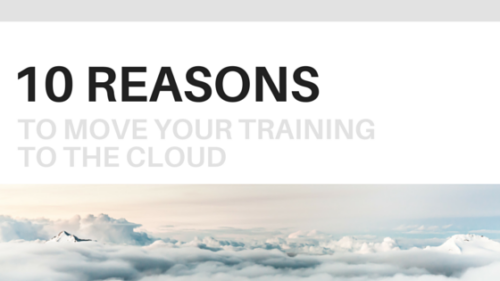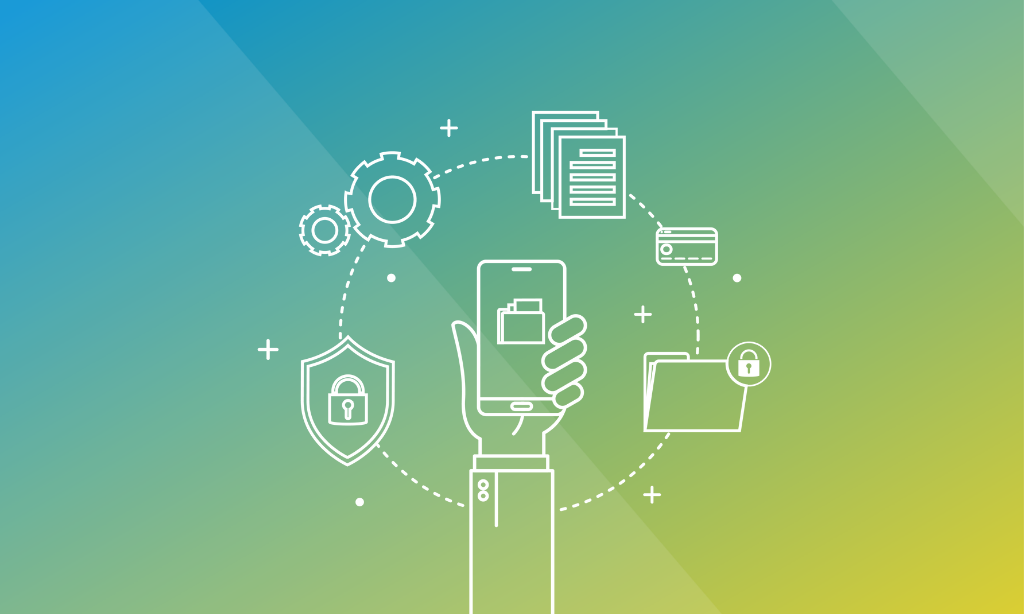10 Reasons to Move Your Training to the Cloud
IT departments are moving to the cloud. In many enterprise businesses it’s even a mandate. The cost savings are undeniable. And the infrastructure supporting cloud technologies has matured to a level of stability trusted by many of the largest institutions. Some of the most risk averse industries have seen the value and already move to the cloud. If you’re still on the fence about it, here’s 10 reasons to get off the fence and move.
1. Lower Cost
If you’re new to corporate training you may not be familiar with the history of million dollar LMS implementations. Today’s SaaS based Learning management systems offer a significantly cheaper training solution with many more benefits as you’ll see below. For a few hundred bucks a month you can have a full functioning LMS. Cost reduction is the one of the most wonderful reasons to move your LMS to the cloud.
2. Simple Cost Structures
SaaS solutions offer cost structures that allow you to pay for only what you need. As your business grows your SaaS based Learning management system grows with you. The vendor becomes a valued partner in your success.
3. Fast Implementation
Historically enterprise systems required both hardware and software purchases. These forced long implementation cycles and needing to work on your IT departments schedule. With a SaaS based LMS your system is up and running immediately. And with a few administrative settings completed and content uploaded your ready to go in minutes, and ready for a formal launch in just a few days. Read how Gems Group deployed Litmos and Salesforce integration in a week.
4. Flexibility
When your system is based in the cloud you can use as much or as little of the system as needed. The system can grow as your business grows. And in the case of training course content, a cloud based system can deliver almost any type of content. You aren’t confined to one method or model of training delivery. You can choose your media, the order of your modules, and even curriculum styled learning paths. API integrations are also a wonderful part of the cloud not often talked about. With Litmos you can easily connect with Box.com, dropbox.com, Salesforce.com, TribeHR.com, and other SaaS systems. The possibilities are endless.
5. Free upgrades
Free is a tricky word. One could argue that nothing is free. But I use it in the sense that SaaS LMS developers make improvements to the system on a regular basis, and far more often than in the past. Historically, software upgrades happened maybe once a year, and there would always be a significant upgrade fee. That is no long the case. Once you buy into a solution you’ve also bought into their upgrade cycle and easily see how innovative and responsive a vendor is with releasing upgrades.
6. Scales up the Human Element of Training
This could apply to an on premise system as well. However, the SaaS based LMS makes it easier than ever to automate many administrative tasks associated with the training function of an organization. Automated email reminders, compliance scheduling, report distribution, and gamification features are just a few of the benefits. The cloud LMS makes you and your training department more productive than ever before.
7. Backups and Data Recovery
Backups are always a headache. SaaS solutions handle that task for you automatically. Today’s data centers that house most of the SaaS data are complex automated systems focused on uptime and keeping you productive.
8. Security
Everyone worries about security these days. It’s an important risk factor to consider. And today’s SaaS solution providers are well aware of your concerns. There are standards in place to assure nothing but the highest levels of security compliance. Many customers demand vendors meet a list of security demands as well as addressing monthly or quarterly reviews.
9. Mobile & Browser Access
Another recent update in internet protocols, HTML5, standardizes much of the browser experience across devices. This makes it very easy for SaaS providers to create a system that can deliver content to the majority of devices in the market today. And the mobile app market gives users an additional channel for delivering content to users. Apps access the same data as the browsers, but can also offer additional functionality that may not be available via the browser yet.
10. Time Savings
Besides faster implementation times. You also save time creating courses through easier user interfaces. Today’s software and interface design methods are significantly more user friendly than the systems of the past. Much of this stems from the SaaS trend and designers being keenly aware of how the user engages with the different types of interfaces. Developing new courses and updating existing courses is also a breeze. You can easily add modules with quizzes, videos, and SCORM files, developed in-house or purchases from content vendors. You just upload the file and your course is ready to go. There are so many little functions in a SaaS based LMS that will save your time its impossible to mention them all here.
There are many reasons to switch to a SaaS based Learning Management System. I’ve only touched on a few of them here. I would encourage you to start a trial and just sample what’s possible. Click here to start your Litmos trial.






